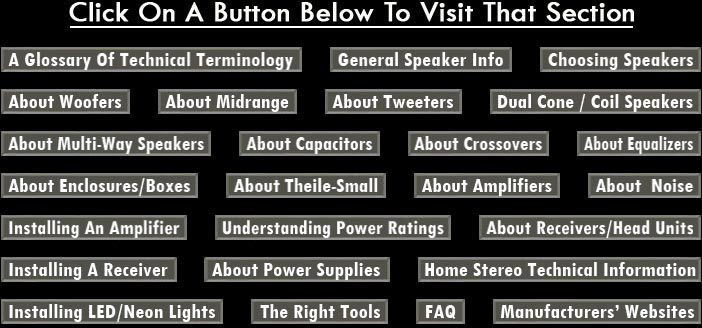


Xmax
A measure of a speaker cone's maximum Excursion (back and forth motion) in one direction while still maintaining a linear behavior (moving in a straight line with high precision). This factor is measured in inches or millimeters. Xmax is more precisely defined as the width of the voice coil that extends beyond the front plate plus 15%. This relates to how far the speaker can move in either direction without appreciable distortion.
X and Y axis
In a graph or chart showing the realtionship of one acoustical phenomenon or measurement relative to another, it is common to plot the ralionship on a chart with intersecting vertical and horizontal axis (X and Y) that graphicly shows the interaction between two or more elements, such as frequency and power in a given situation.
Y Cable or Adapter
A cable used to split a signal into two parts or combine two signals into one. The term, Y Cable is used because the cable has the appearance of the letter Y, where there are two parts joined into one, or one split into two, depending upon the purpose. Y Cables are common throughout audio as a simple and straightforward way to accomplish these two tasks.
Z
The designation of impedance, as High Z, - 47,000 ohms, or low Z, - 4 ohms
Zero Bit Detection
A circuit in a D/A converter that monitors the digital audio bit stream. upon encountering all bits low, or zero bits, the output of the D/A is disconnected from the preamp. This improves the signal-to-noise ratio specification.1
Zero Crossing
An analog waveform consists of two alternating voltage polarities (positive to negative to positive...etc.). The point where the polarity changes from positive to negative, or vice versa, is called the zero crossing. When looping a wave or editing two waveforms together, this is the ideal location for the splice as the levels of the two waves are both at zero. This eliminates the possibility of clicks or pops created by mis-matched levels, and makes for a smooth sonic transition.
Zero Output
The absence of output signal or output power.

















